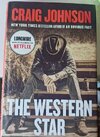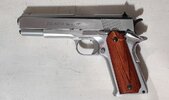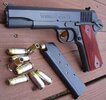trackskippy
Member
- Joined
- Oct 2, 2010
- Messages
- 3,495
It may at one time not have been considered "wrong", but these days, its not considered "right" by most who carry one seriously.Colt's early literature recommended (and the pistol was designed) to be carried hammer down with the chamber loaded, so it's not "wrong." Lever action rifles and single action revolvers were carried the same way for 40+ years before the 1911 was even a thing.
Condition 1 with the thumb safety on exists because the Army wanted it that way. Back in the horse cavalry days, you could engage the safety, keep the pistol in your hand, and still have one hand for your horse.
Lever action and SA revolvers were carried that way because that's how you "safely" carry them. And usually taken to the next level too, by either an empty chamber on the rifles, and an empty cylinder under the hammer on the revolvers (at least that last part has been remedied for the most part these days). And that usually took more administrative handling after use to get them back to "safe" again too.






